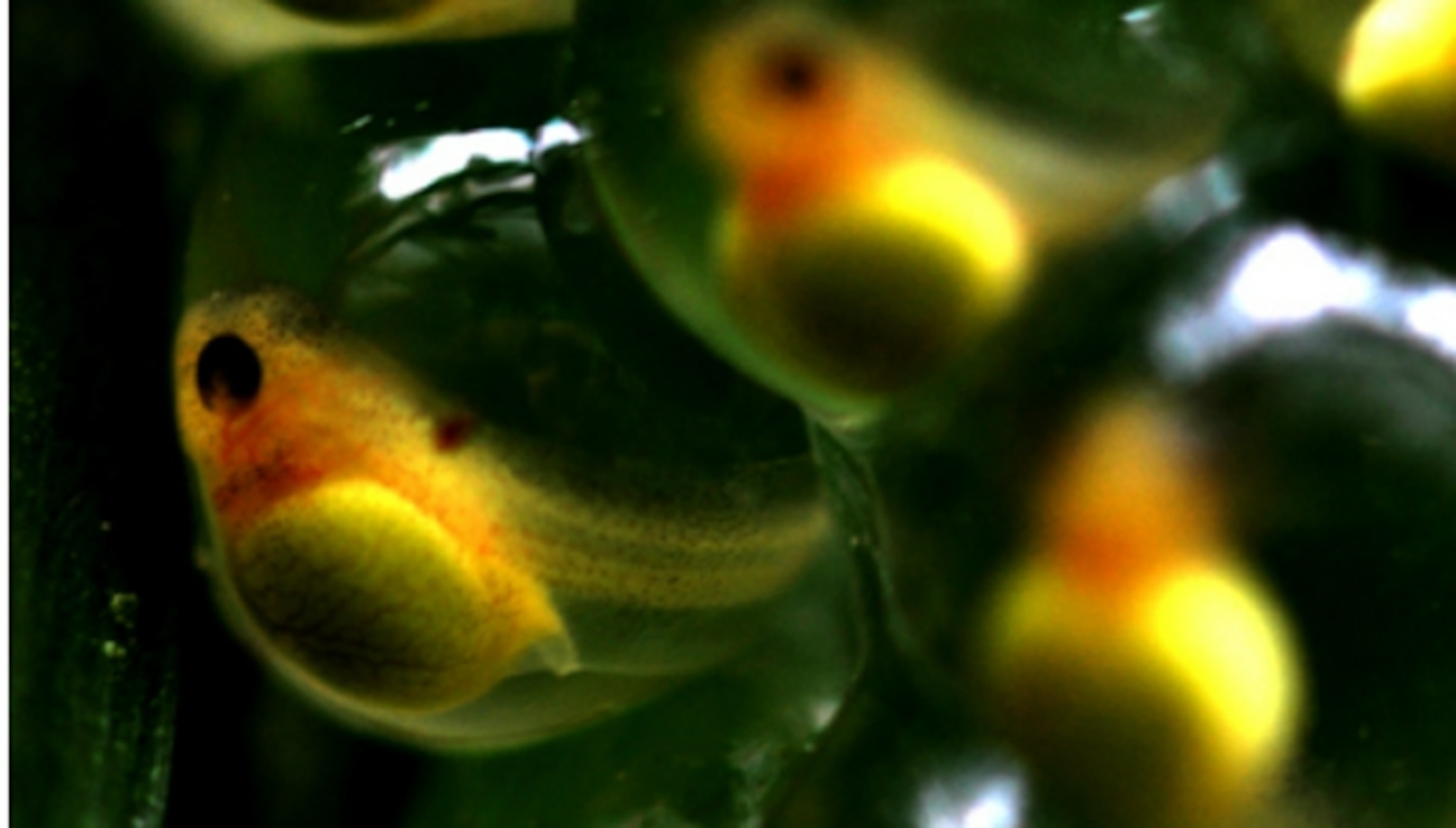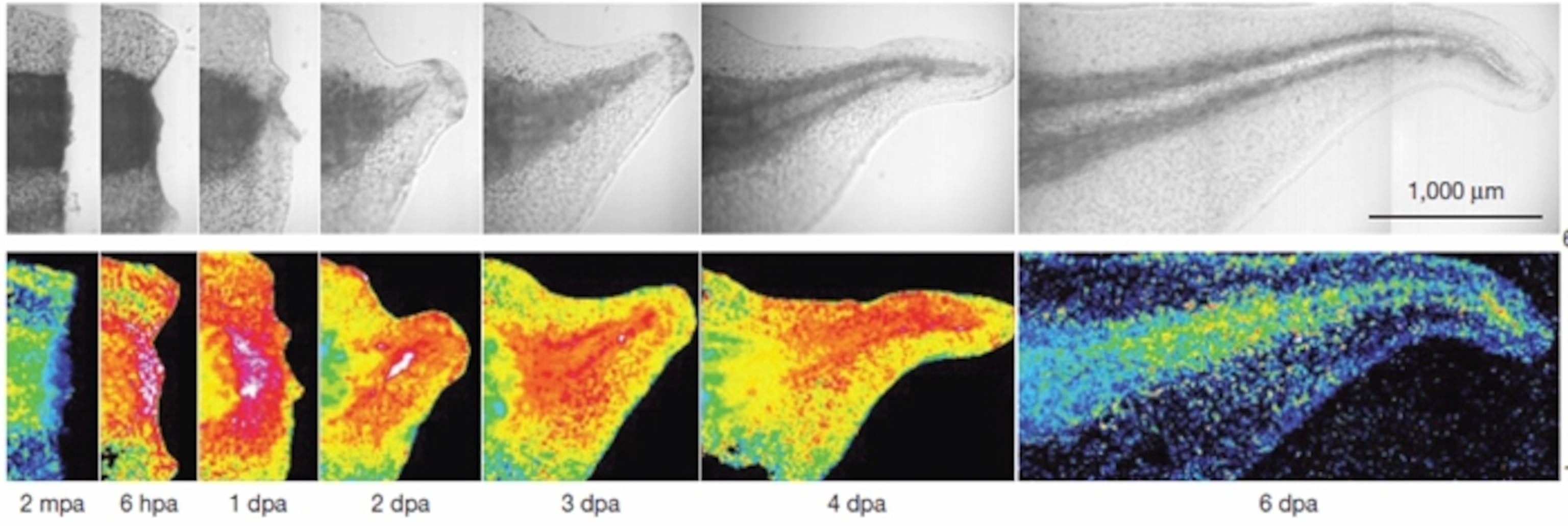
Tadpole, heal thyself—vilified chemicals spur regeneration
If a tadpole loses its tail, it can simply grow another. The process takes less than a week. Humans can only dream of such amazing regeneration and many scientists are trying to understand how it works. Now, Nick Love from the University of Manchester has found that the tadpole’s healing powers depend on a group of chemicals that are often caricaturised as unwanted villains.
They’re called “reactive oxygen species” (ROS), or more colloquially as “free radicals”—small molecules that contain oxygen atoms and are highly reactive. We produce them through the act of living, and we depend on them to coordinate the various chemical events within our cells. But when their numbers increase, ROS can wreak havoc on our cells by reacting with, and damaging, important molecules like protein and DNA. They’re like chemical bulls in china shops, energetically destroying whatever’s around them. As such, people often cast ROS as harmful villains that need to be “mopped up”, and antioxidants are the heroes for the job.
The view that ROS are “bad” is so widespread that antioxidants have almost become synonymous with good health. But try telling that to a tadpole. Love found that antioxidants actually hamper a tadpole’s ability to regenerate a severed tail, precisely because they mop up ROS. These rowdy chemicals are essential for the animal’s healing prowess.
The study began a few years back when Love catalogued the genes whose activity changes in a regenerating tail. Several of these, which are switched on together, are involved in producing ROS, such as hydrogen peroxide. “This was rather odd, as ROS are normally thought to be bad for cells,” says Enrique Amaya, who led the study.
Love confirmed that ROS levels shoot up in the stump of an amputated tail, using proteins that change colour (and dyes that glow) in their presence. Of course, this didn’t mean that these molecules were responsible for restoring the tail. They could have been a result of the healing process or even something that the tadpoles needed to overcome.

But Love ruled out these alternatives. When he treated the tadpoles with an antioxidant, he severely delayed their tails from growing back. And when he chemically neutered an enzyme called NOX, which is responsible for producing ROS, the tails stopped regenerating altogether.
This study is just one of many that are slowly rehabilitating the reputation of ROS. While they’re certainly damaging, they also play important roles in healing wounds and killing invading microbes. And antioxidant supplements, meanwhile, are clouded by a long shadow of hype and disappointment.
Beyond striking a blow for stigmatised molecules, Love’s study also hints that the process of regeneration shares many similarities across disparate branches of the animal kingdom. In tadpoles, ROS seem to trigger a chain of genes called the “Wnt pathway”, which activate each other like runners in a relay race. This chain is crucial for controlling the shape of animal bodies as they grow from fertilised eggs into fully formed embryos. And it seems to be vital for healing in virtually every animal that scientists have looked at, from tadpoles to mammals to fish.
In 2009, Timothy Mitchison’s group at Harvard Medical School found that zebrafish also produce lots of ROS when they are wounded. Panagiotis Tsonis from the University of Dayton, whose work on healing newts I’ve written about before, has seen that genes related to ROS become more active when newts regenerate the lenses of their eyes. And at a recent conference, other labs reported similar results in other animals.
“The word on the ground is that ROS likely play a universal role in regeneration in all organisms that regenerate,” says Amaya. “Anytime biologists can confirm and extend findings from one regenerating system to another, it is an important step,” says Ashley Seifert from the University of Florida (you might remember him from last year’s study on self-flaying mice). It helps us to understand if very different groups regenerate in the same way, or if there are many routes to the same super-power. “Evidence points to the former,” says Seifert.
“The ultimate motivation behind my lab’s work is to find ways to improve our own ability to heal and regenerate, as humans are generally quite lousy at it,” says Amaya. Will manipulating ROS levels get us there? “Of course, we do not know the answer yet. We expect that there is a Goldilocks zone of ideal ROS levels,” says Amaya. Too little, and healing can’t happen properly. Too much, and you get rampant cellular destruction. Biology—surprise!—is complicated like that.
Reference: Love, Chen, Ishibashi, Kritsiligkou, Lea, Koh, Gallop, Dorey & Amaya. 2013. Amputation-induced reactive oxygen species are required for successful Xenopus tadpole tail regeneration. Nature Cell Biology http://dx.doi.org/10.1038/ncb2659
